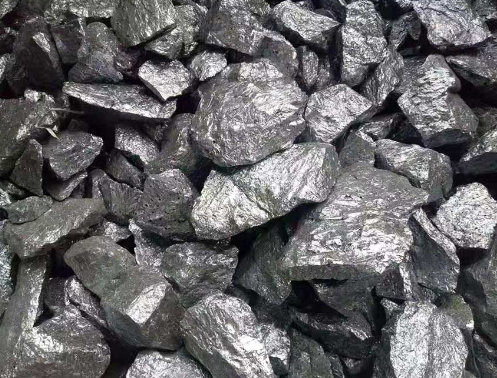For many materials in carbon steel, it contains less than 0.5% Si, which is generally brought in as a reducing agent and deoxidizer in the steelmaking process.
Silicon can be dissolved in ferrite and austenite to improve the hardness and strength of steel, its effect is second only to phosphorus, and stronger than manganese, nickel, chromium, tungsten, molybdenum, vanadium and other elements. However, when the silicon content exceeds 3%, the plasticity and toughness of the steel will be significantly reduced. Silicon can improve the elastic limit, yield strength and yield ratio (σs/σb) of steel, as well as fatigue strength and fatigue ratio (σ-1/σb). This is the reason why silicon or silicon-manganese steel can be used as spring steel.

Silicon reduces the density, thermal conductivity and electrical conductivity of steel. It can promote the coarsening of ferrite grains and reduce the coercive force. It has the tendency to reduce the anisotropy of the crystal, so that the magnetization is easy and the magnetic resistance is reduced. It can be used to produce electrical steel, so the magnetic hysteresis loss of the silicon steel sheet is low. Silicon can improve the magnetic permeability of ferrite, so that the steel sheet has a higher magnetic induction intensity under a weaker magnetic field. However, silicon reduces the magnetic induction of steel under strong magnetic fields. Silicon has a strong deoxidizing power, thereby reducing the magnetic aging effect of iron.
When silicon-containing steel is heated in an oxidizing atmosphere, a layer of SiO2 film will be formed on the surface, thereby improving the oxidation resistance of the steel at high temperature.
Silicon can promote the growth of columnar grains in cast steel and reduce plasticity. If silicon steel cools quickly when heated, due to the low thermal conductivity, the temperature difference between the inside and outside of the steel is large, so it breaks.
Silicon can reduce the weldability of steel. Because the ability to combine silicon with oxygen is stronger than iron, it is easy to generate silicate with a low melting point during welding, which increases the fluidity of slag and molten metal, causes spattering, and affects welding quality. Silicon is a good deoxidizer. When using aluminum for deoxidation, adding a certain amount of silicon as appropriate can significantly improve the deoxidation performance. There is a certain amount of silicon remaining in steel, which is brought in as a raw material during iron and steel making. In boiling steel, silicon is limited to <0.07%, and when it is added intentionally, ferrosilicon alloy is added during steelmaking.
